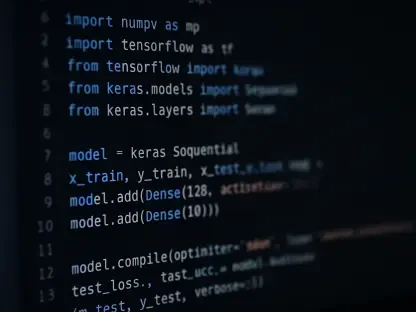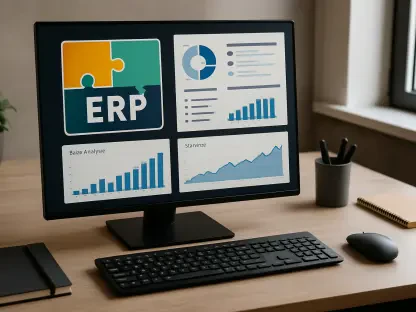I’m thrilled to sit down with Anand Naidu, our resident development expert with a wealth of experience in both frontend and backend technologies. Anand brings a unique perspective on the intricate balance of reliability, cost optimization, and innovation in the ever-evolving world of DevOps and FinOps. With a deep understanding of various coding languages, he has navigated the challenges of building scalable, cost-effective systems while maintaining operational excellence. In this interview, we explore the economic realities of reliability, the practical use of error budgets, the complexities of cloud cost management, and the strategic importance of disciplined innovation in software development and cloud operations.
Can you share a memorable experience where a reliability issue, such as a problematic deployment, resulted in significant financial or operational setbacks for a business?
Absolutely, I’ve seen this firsthand. A few years back, I was part of a team that rolled out a major update for a critical customer-facing application. We underestimated the testing scope and didn’t have enough canary deployment coverage. The result was a cascading failure that knocked out multiple services for several hours. The immediate impact was brutal—SLA penalties kicked in, customers started voicing frustration on social media, and we had to pull in the entire team for an emergency fix, costing us weeks of planned work. Beyond that, the hidden toll was a feature freeze that lasted over a month. We couldn’t ship anything new while we stabilized the system, and it took a real hit on team morale as we watched competitors move ahead. Recovery involved a complete overhaul of our deployment process, adding rigorous pre-release checks and better monitoring. It was a painful lesson, but it forced us to prioritize reliability in a way we hadn’t before.
How do you determine the right level of reliability to aim for in an organization, especially when chasing near-perfect uptime can become exponentially expensive?
That’s a critical question, and it really comes down to aligning reliability with business needs rather than chasing arbitrary perfection. I always start by looking at what the users and stakeholders actually require—does a 99.9% uptime meet their expectations, or do they truly need 99.99%? I’ve seen cases where teams overcommit to uptime in SLAs just to win a deal, without calculating the infrastructure and staffing costs. For me, the decision hinges on impact analysis: if downtime in a payment system could cost millions in lost revenue, we invest heavily in redundancy. But for an internal tool with minimal impact, we accept lower reliability to save resources. It’s about finding that sweet spot where the cost of additional uptime doesn’t outweigh the benefits, and I often work with product and sales teams to set realistic expectations based on hard numbers.
In your work, how have you leveraged error budgets to make informed decisions about deployments and risk-taking?
Error budgets have been a game-changer for me in managing reliability as a tangible resource. I’ve used them to create clear boundaries for my teams—essentially, it’s a downtime allowance based on our service level objectives. For instance, if we’ve got 99.9% uptime as a target, we calculate the acceptable downtime per month and track every incident against it. When I set one up, I collaborate with stakeholders to define key metrics like availability or latency, then monitor them in real time. If we burn through the budget early due to a bad deployment, we pause feature releases until we’ve rebuilt stability. It’s a tough call, but it forces discipline. Getting everyone on board means constant communication—I make sure the team sees the budget as a shared currency for balancing speed and safety, not a restriction.
What challenges have you encountered in managing cloud costs within a DevOps or SRE role, and how do you address them?
Cloud cost management is a beast, especially as workloads grow. One of the biggest challenges I’ve faced is unexpected spikes in areas like data transfer or idle resources that nobody noticed until the bill arrived. I’ve had projects where over-provisioned storage just sat there, costing thousands monthly, because no one had visibility. To tackle this, I’ve pushed for real-time cost tracking integrated into our workflows, so engineers see the financial impact of their choices as they make them. Getting the team to care about costs when they’re focused on features or security is tough, so I’ve tied cost-saving goals to performance metrics and used gamification to make it engaging. Automation helps too—tools that flag anomalies or suggest optimizations have saved us from nasty billing surprises more than once.
How do you see the role of automation, like FinOps as Code, in transforming cost optimization for DevOps teams?
Automation, especially FinOps as Code, is a lifeline for cost optimization. I’ve implemented it in past roles to embed cost controls directly into our deployment pipelines. For example, we had scripts that automatically scaled down unused test environments overnight or migrated to cheaper storage tiers based on usage patterns. Unlike manual reviews, which could take weeks, this approach delivers savings instantly and frees up engineers to focus on higher-value tasks. The real power is in removing human error—once the rules are coded, they execute consistently. But it’s not a silver bullet; you’ve got to ensure you’re optimizing the right things, or you’re just automating inefficiency. It’s been incredible to see how this shifts cost management from a reactive chore to a proactive strategy.
What strategies have you found effective in fostering innovation while operating under constraints like tight error budgets or limited cloud spend?
Constraints can actually spark better innovation if you approach them right. With tight error budgets, I’ve encouraged teams to treat them as a currency—earn it through solid practices like robust monitoring and clean rollbacks, then spend it on calculated risks like testing new features or architectures. On the cost side, I push for ruthless prioritization: every feature or experiment has to justify its operational overhead. I’ve led brainstorming sessions where we ask, “Does this add enough value to warrant the cost or risk?” It forces intentionality. The key is creating a culture where constraints aren’t seen as roadblocks but as guardrails that guide smarter decisions. Some of our best ideas have come from working within those limits.
Looking ahead, what is your forecast for the evolution of DevOps and FinOps practices in balancing reliability, cost, and innovation over the next few years?
I think we’re heading toward a deeper integration of DevOps and FinOps as a unified economic discipline. Over the next few years, I expect organizations to move beyond just adopting these practices to mastering them with precision—think real-time cost intelligence and error budgets becoming as standard as CI/CD pipelines. With AI and automation taking over routine tasks, teams will shift focus to designing inherently reliable and cost-efficient systems from the ground up. We’ll see more emphasis on tying every dollar spent to measurable business value, especially as AI workloads drive up cloud costs. The winners will be those who treat reliability, cost, and innovation not as competing priorities but as interconnected levers, using data-driven decisions to stay ahead. It’s an exciting time, and I believe economic discipline will be the true differentiator for high-performing teams.









